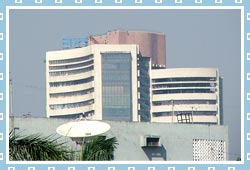 |
History & Figures
History Of Bombay Stock Exchange
The history of BSE can be traced back to 1850s when a group of five stock brokers used to conduct meetings under the banyan tree in front of Mumbai Town Hall. As the number of the brokers increased, they started changing the venue of the meeting constantly. Almost two decades later, this small group moved to the Dalal Street in 1874, and later, in the following year, it was recognized as an official organization by the name 'The Native Share & Stock Brokers Association'. As per the Securities Contracts Regulation Act, BSE became the first stock exchange to be recognized by the Government of India in 1956. BSE Sensex was developed in 1986 which was considered a tool to measure the overall performance of the Bombay Stock Exchange. Using this index, various equity derivative markets were open and many future trading contracts were made in 2000 which further led to expansion of its trading platform. BSE switched to electronic trading system in 1995 and took only fifty days for this transition. 'BOLT' or the 'BSE On Line Trading' is the automated version of the trading platform, which is screen based and currently has a capacity of 8 million orders per day. Also, BSE is the first stock exchange in the world to introduce centralized internet trading system (BSEWEBx.co.in), allowing investors from all over the world to trade on the BSE platform.
Capital Market Of India
Currently, the Bombay Stock Exchange is decentralized and the managing teams of the exchanges comprise a panel of directors. The board members of this trading company include various representatives of trading organizations and also other professionals headed by a Managing Director at the topmost position. This committee takes part in the formation of policies, guidelines and programs to control the entire process of the exchange. There are 417 cities and several towns of India that lie within the fold of the Bombay Stock Exchange. BSE experienced a phenomenal growth during the year FY04-05 and it turned out to be a fruitful time for the exchange.
Major Companies In BSE: